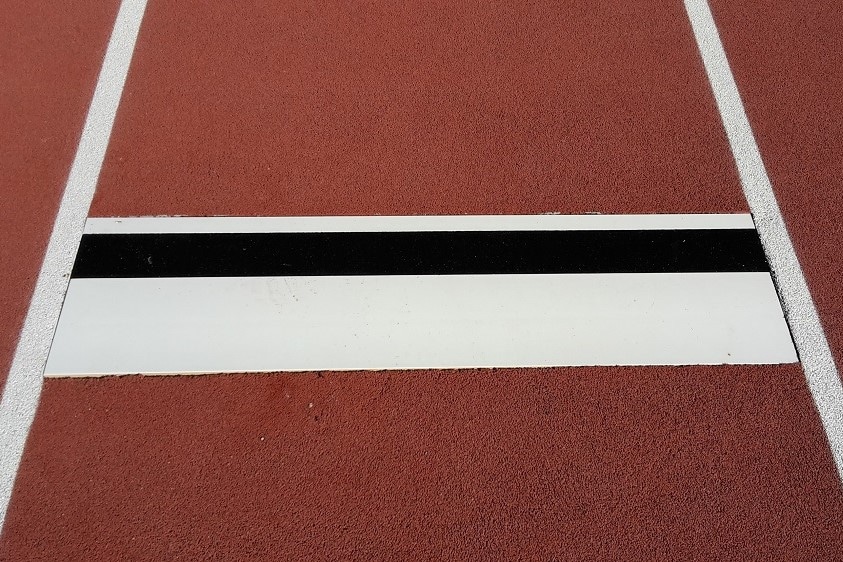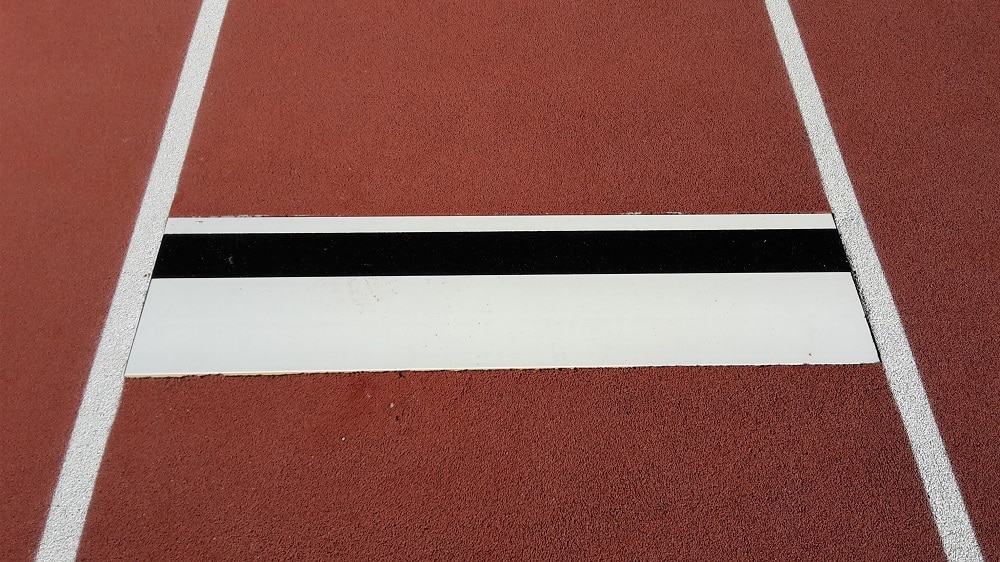
From the take-off board to the jump pit
Everyone knows the long jump and triple jump disciplines from television or has been on site at such competitions themselves. But few people know the technical and functional requirements of the disciplines and the sports equipment used for them. As a manufacturer and permanent member of the working committee “Track and Field Equipment in the DIN Standards Committee for Sports and Leisure Equipment (NASport)”, we would like to show in this article some background and technical details that apply to long jump and triple jump, because without mature technology there will be nothing with new record marks in the long jump and triple jump!
When it comes to the long jump, it’s all in the details!
The facilities for the long jump are divided into different classes according to their respective construction. The following table shows these classes:

The respective applicable requirements and test methods for the horizontal jump disciplines long jump and triple jump are defined in the German standard DIN 79005:2017-4 based on the WORLD ATHLETICS Technical Rules. In particular, specifications are given for the following technical components of the jump-off facility:
- Take-off board
- Board, which is recessed into the built-in trough (with or without height compensation).
- Insert board
- As a control strip to indicate a step over during the jump
- Plasticine
- Flexible mass for modeling a jump marker
- Blank board
- Component that covers the full surface of the installation tray to overflow
- Built-in trough
- System permanently installed in the subsoil to accommodate take-off board / blank boards
- Jump pit
- Pit filled with sand for landing
Technical-functional requirements
In the following, we would like to take a closer look at the individual components for the long jump / triple jump from a technical view. Let’s start with the take-off board, because without a perfect take-off you definitely can’t achieve a good distance!
take-off board
Basically take-off boards must be manufactured rectangular. The materials used are wood or other suitable solid materials. Important here: take-off boards must not deform or have a springy effect!
The take-off take-off board may consist of several components, and the take-off surface may be interchangeable as long as the homogeneity of the take-off surface is not affected. It must be ensured that the athletes’ shoes with and without spikes have a secure grip and do not slip.
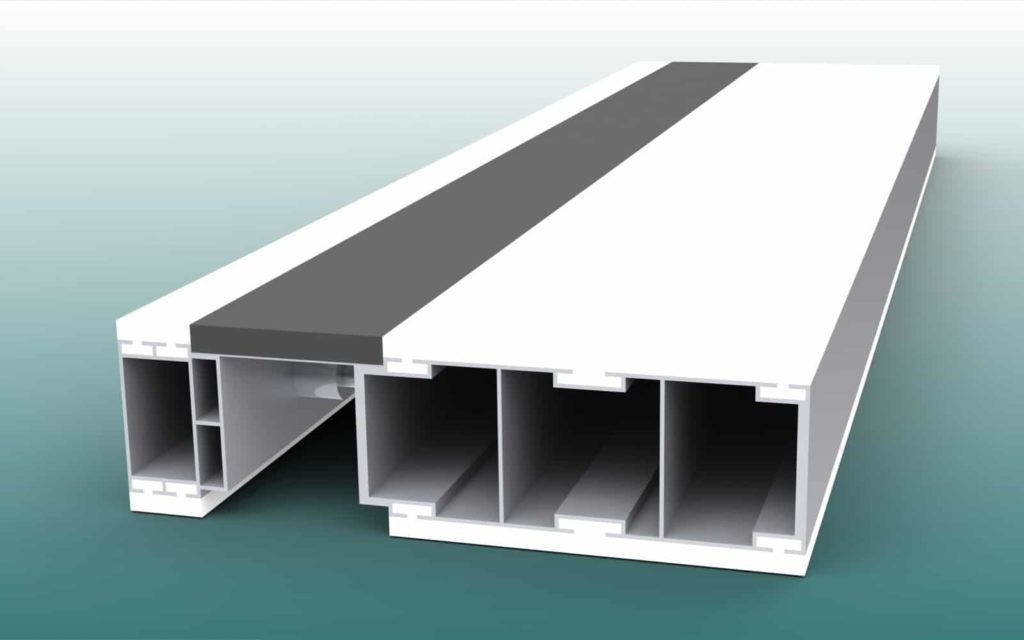
It goes without saying that care must be taken to ensure that take-off boards can be accurately fixed in the installation trough. Class A1 and A2 take-off boards must be height-adjustable in such a way that level compensation with the surrounding running track surface can be achieved. The surface of the take-off board must always be white! A suitable device must be available on the take-off board for removing it from the installation tray.
The dimensions of take-off boards are specified as follows:
- Length 1220 mm (+/- 1 mm)
- Width 200 mm (+/- 2 mm)
- Height max. 100 mm (without height adjustment / max. 170 mm with height adjustment)
Built-in trough
The installation trays for take-off boards and blank boards must be 1,220 mm (+- 2 mm) long, and both long sides must be manufactured at least 10 mm lower so that the running track covering can be installed directly against the take-off board.
It is recommended that the upper edge of both longitudinal sides be designed in such a way that the track surface can form a permanent and stable connection with the installation trough. For outdoor installations, water drainage must be provided in installation trays.
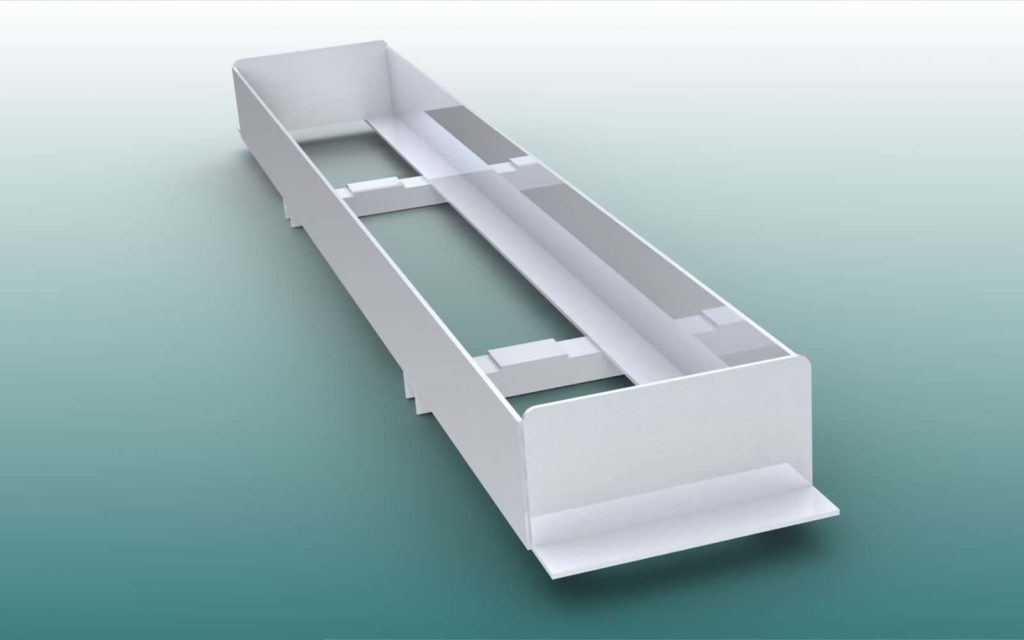
Blank board
The blank boards must have a length of 1,220 mm (+- 1mm) and be manufactured at least 10 mm lower than the level of the raceway pavement. In principle, it must be possible to produce a coating with the same properties of the surrounding runway for the blank boards.
And very important: blank boards must not deform or show a springy effect when jump off or running over.
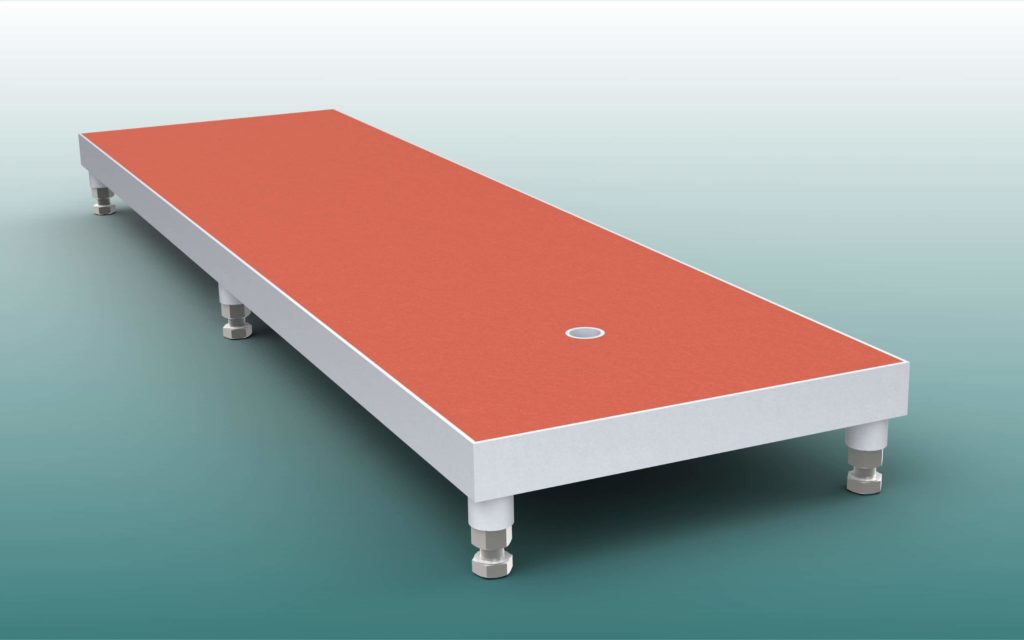
For the uninstallation of blank boards from the installation tray, a device for their removal shall be provided, the diameter of which shall not exceed 20 mm. In principle, there must be no openings in the area of less than 500 mm to the right and left of the run-up track axis.
Insert boards
The insert boards must be of a different color than the take-off board used and must be able to be fitted into the recess provided in the take-off board. The structural design of the insertion boards must be stable enough to safely withstand the forces acting during the jump at all times.
To ensure that the competitors do not slip and have a secure grip, the material must be selected appropriately for this purpose.
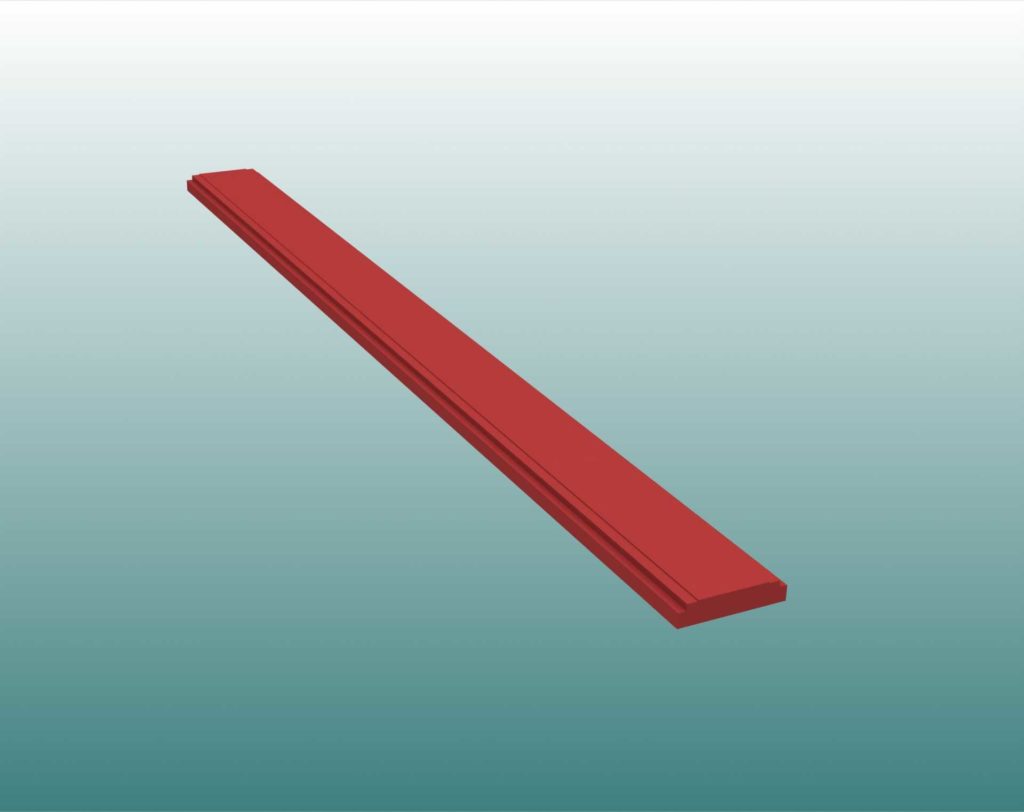
There are two different types of insert boards: Type 1 designates insert boards for training, school and popular sports, while Type 2 is suitable for competition. In the case of type 2, a groove must be provided to accommodate the plasticine in accordance with the applicable rules.
Professional athletics products
Directly from the manufacturer
At artec® you are exactly right if you have high quality demands and rely on durable products! Our athletics products are manufactured according to the latest technical rules and standards, are TÜV-tested and have the certificates of WORLD Athletics (previously IAAF).
If you want to buy high quality athletics products or need more information, please feel free to ask us directly. Under 05422 / 9470-0 or the mail address info@artec-sportgeraete.de we are very gladly at your disposal.

You can also find more information about artec® and our services here:
- The field hockey goal from artec® – stable and safe
- Fully welded recreational goal- Durable quality from the manufacturer!
- New order from Lanzarote for artec®
- High quality basketball equipment in various designs
- Volleyball posts in many versions directly from the manufacturer
- Not all soccer goals are the same – artec® clarifies!
- Professional player cabins in top quality from artec® Sportgeräte
- American football goals from the manufacturer in top quality
- Barrier & board advertising for sports field and stadium
- Funino – youth soccer with game intelligence
